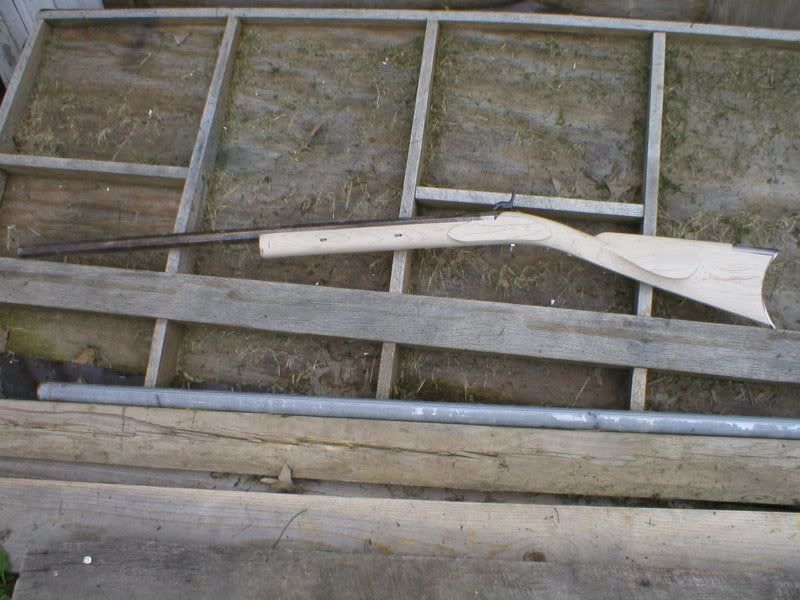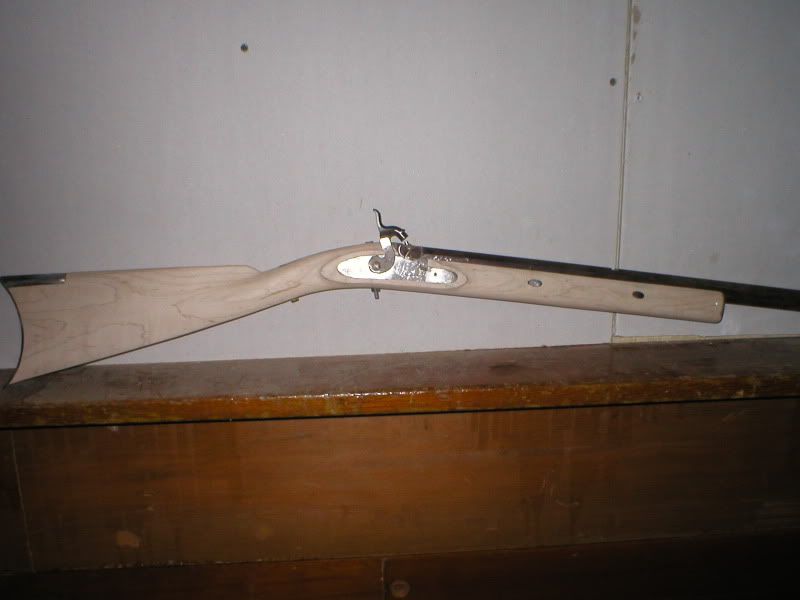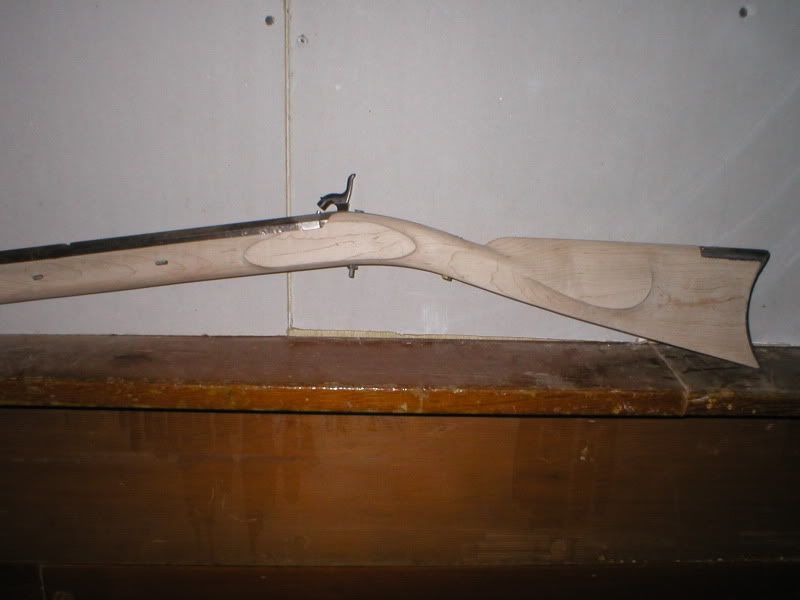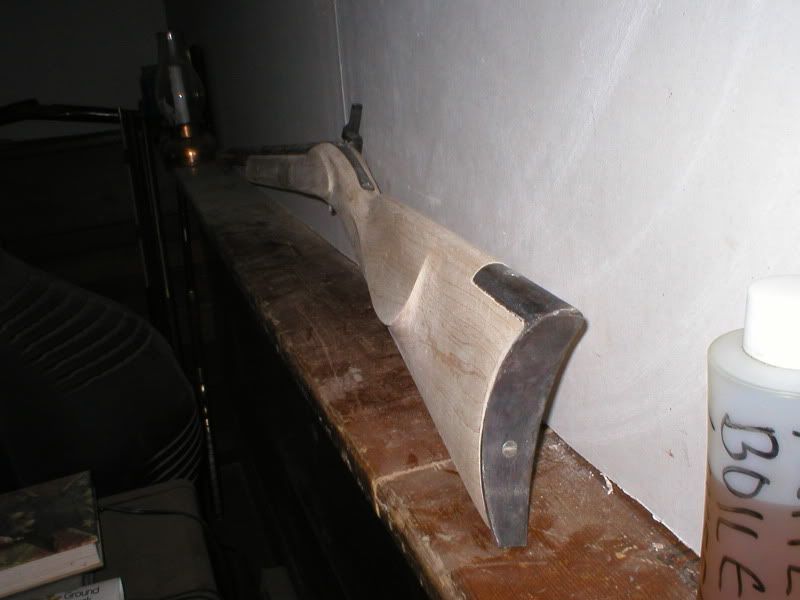It's getting there. Commentary is from the builder.
lots of sanding done, some serious shaping taking place. This is all 60 and then 80-grit work, BTW, which is the stage at which the polish left by sharp chisels and gouges is ground away, and the polish to come from progressively finer sheets of paper isn't there, yet, so you won't see much curl in the wood right now.

Right and left views of the butt and breech area. The lock panels are going to be slimmed up more, but when working with 60 and 80 grit paper on an oscillating sander it's best not to try to get too fancy on small details. That comes later.


An interesting shot of the cheekpiece contour, showing how its curve is in line with the top curve of the sideplate panel. The slight downward curve as the cheekpiece blends into the wrist will fade away with finer and more detailed sanding.

The butt, from the top, showing both cast-off and the slimness the comb is taking on. On my inexpensive trade rifles I don't cut this detail quite as fine, but I've noticed that on the Hawkens I've seen the comb tapers to a very slender, almost pointed profile when seen from above, and that's a detail I very much wanted to capture on this gun. It's getting there. Removing wood in this area is best done in stages, or you lose perspective and can quickly end up with something that causes you to give serious thought to taking up finger painting or coloring books, something a little less critical/stressful.

lots of sanding done, some serious shaping taking place. This is all 60 and then 80-grit work, BTW, which is the stage at which the polish left by sharp chisels and gouges is ground away, and the polish to come from progressively finer sheets of paper isn't there, yet, so you won't see much curl in the wood right now.

Right and left views of the butt and breech area. The lock panels are going to be slimmed up more, but when working with 60 and 80 grit paper on an oscillating sander it's best not to try to get too fancy on small details. That comes later.


An interesting shot of the cheekpiece contour, showing how its curve is in line with the top curve of the sideplate panel. The slight downward curve as the cheekpiece blends into the wrist will fade away with finer and more detailed sanding.

The butt, from the top, showing both cast-off and the slimness the comb is taking on. On my inexpensive trade rifles I don't cut this detail quite as fine, but I've noticed that on the Hawkens I've seen the comb tapers to a very slender, almost pointed profile when seen from above, and that's a detail I very much wanted to capture on this gun. It's getting there. Removing wood in this area is best done in stages, or you lose perspective and can quickly end up with something that causes you to give serious thought to taking up finger painting or coloring books, something a little less critical/stressful.



